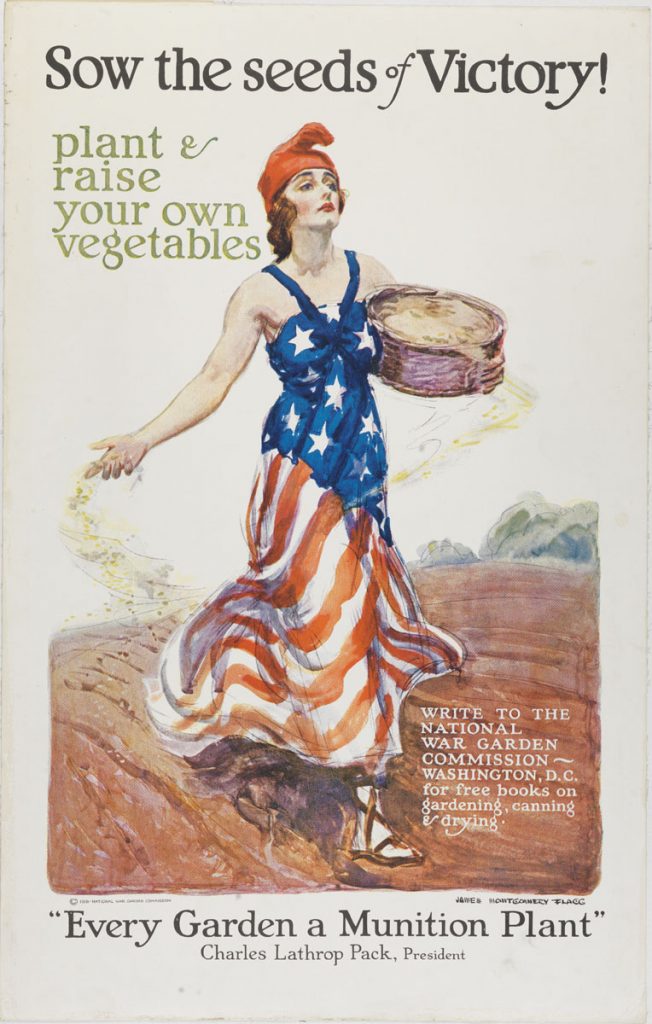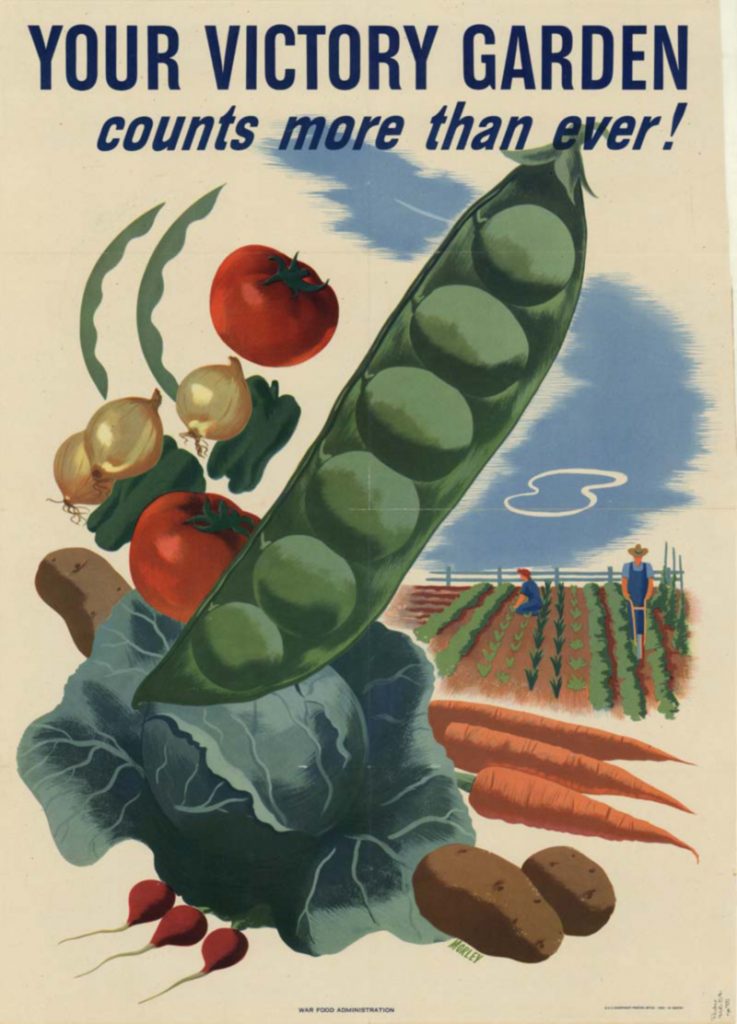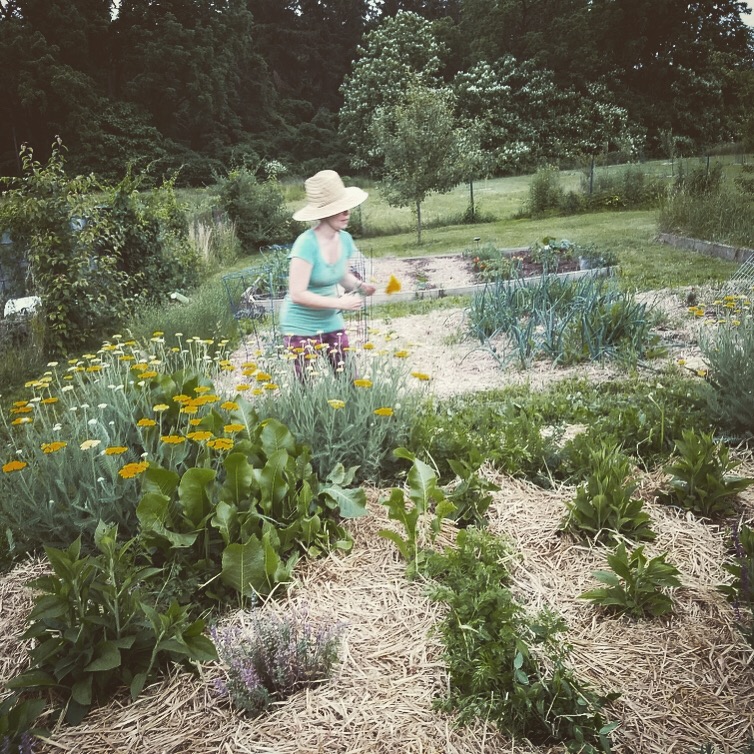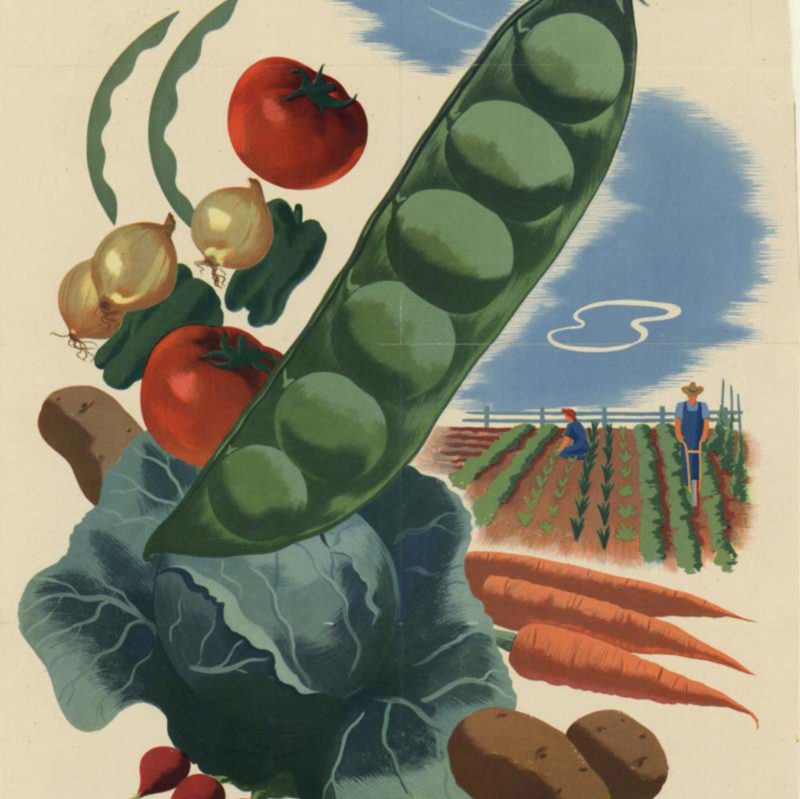World War Virus: Sow the Seeds of Your Victory Garden and Rise Up
We are at war. During these trying times, we’ve fallen to fear. We all have, even for a moment. To gain control, we panic bought the things that felt urgent. For some, it was bleach – for others, their favorite brand of cheese. My parents had art supplies delivered from across the country. For me, it was seeds and soil.
Since the Ides of March 2020, I am grateful I didn’t have to see the grocery store shelves barren and relieved now to be surrounded by shoppers who can more calmly share the food that remains in stock. We will be okay. But there is a good chance we may not all feel as free to wander our stores much longer.
We are facing a third world war, a global fight against the coronavirus (what I’d come to realize was also a psychological war on our freedoms and eventually, a bitter culture war), which will likely get worse before it gets better.
Let’s focus on getting better. Your health is in your hands. We have the opportunity to ask important questions and demand answers. What should (or shouldn’t) the federal government do to protect our health? When the responsibility rests (or shouldn’t rest) on the shoulders of local officials, what happens then?
“Ask not what your country can do for you – ask what you can do for your country.” JFK’s words are a call to action steeped in the history of this country, the United States. While rooting ourselves in the present moment, we can lean on the problem-solvers of the past.
World War I: When Gardening Became A Patriotic Act

Imagine farms as battlefields and farmers fighting those battles. That’s how the landscape of Europe was changed during World War I. When the food supply plummeted, millions of starving people needed help.
President Wilson’s administration stepped in. The National War Garden Commission motivated the American people to “put their idle land to work.” Schools, parks, backyards, and any other available lots were dedicated to the cause. Slogans called new gardeners to action: “Sow the Seeds of Victory” and “Every War Garden is a Peace Plant.” Uncle Sam said it plainly: “Garden to Cut Food Costs.”
Men and women who’d never grown their own food had many questions. Where should I plant potatoes? When will they be ready to eat?
Before the uncertainty could pack too tight, the government gave them answers. Novice gardeners received pamphlets on how to start a garden, the highest yielding crops, and ways to prevent plant disease. Food grew so abundantly that the government then distributed information on canning and drying food. Children joined the ranks, too, as “soldiers of the soil.”
Planting food became a patriotic act. People bore the responsibility with great courage as the government provided them with all the inspiration and knowledge needed to create 3 million new garden plots in 1917 and more than 5.2 million in 1918. The harvest that followed was astounding – more than a million quarts of canned fruits and vegetables.
Meanwhile, Americans transformed their diets. Embracing the fruits of their labors, they let go of their comfort foods and adapted to wheatless Mondays, meatless Tuesdays, and porkless Saturdays. That wheat and meat went to the allies abroad.
The movement grew in the United Kingdom, Canada, Australia, and Germany. Ordinary people rose up and dug deep in their backyards … and the food they grew won the war. The dust cleared. Soldiers came home. Peace was restored. Having won the battle for sustenance, their “war gardens” became known as “victory gardens.”
World War II: Victory Gardens Triumph Again

The United States survived the Great Depression and then was drawn into the World War II. Another wave of food rationing began in the spring of 1942. Yet again, citizens at home rose to the occasion, growing their own food so that commercial crops could be sent to soldiers overseas. Meanwhile, the vehicles that once transported food moved munition (weapons) instead.
Desperate to sustain themselves, Americans believed: “Food Will Win the War and Write the Peace.” They planted vegetables in flower boxes and filled backyards with crops. Much to the Department of Agriculture’s dismay, Eleanor Roosevelt proudly planted a vegetable garden on the White House lawn for all to see.
The Roosevelts and their people shared one mission: to grow enough produce to last through winter for family and the local community.
Fortunately, the United States could pull from the experience of WWI gardeners. Pamphlets provided even more information this time around on how to choose a garden site, prepare the soil, and create an efficient layout. The War Production Board made a Victory Garden fertilizer for residents to use at home.
Widely grown produce included beans, beets, cabbage, carrots, kale, kohlrabi, lettuce, peas, tomatoes, turnips, squash, and Swiss chard. Officials recommended that farmers record how many seeds germinated from a single pack and any diseases that had infected their crops. Actually, people who lived in the city were discouraged from gardening at all, as the government feared the seeds would be wasted in poor soil and lack of sunlight.
Now: World Peace Gardens III, Food is Freedom

Now, we are free to grow outside and in. Since returning to the city of Bethlehem, I no longer have a backyard. I had to get creative. I grow seedlings, herbs, and lettuces in my window, harvest raspberries at a coworking office, and cultivate food and flowers beloved by pollinators at two other gardens in Pennsylvania. Urban gardens have just as much promise as wide-open spaces in the country.
What can we learn from the victory gardens of World Wars I & II to defend our country now? First, let’s look at the differences. We are fighting a new kind of war, against the coronavirus (and of more concern to me and many, for our freedom). Our enemy is not quite human. For once, the world shares a common enemy … and a common goal. (Upon reflection, the world is divided on whether to assert top-down restrictions or advocate for individual liberties. If only there could be real unity rising to cocreate a more free, beautiful world, but I digress.)
Like the generations that gardened before us, we need to sustain ourselves. The food supply may dwindle. For the sake of our free wellness, growing food can provide the physical and emotional support that we need so deeply. Victory Gardens will boost morale and immune systems. While we seek new routines, it will gift each of us a sense of purpose.
Also, gardeners live longer. We have been at war with a pandemic that has weakened well-being and freedom once taken for granted. Fresh food is a divine remedy we can grow from the comfort of our homes. While we might not have manuals delivered to doorsteps with a clear answer, you can sow the seeds of your victory garden. Together, let’s dig deep and solve problems independent of old systems that fail to uplift the human spirit.
The joy of gardening stems from an inner strength I believe we can find during the bitter culture war at hand. I hope we’ll be sharing food with our neighbors as we transition from social distance to social space. (Since writing this in Spring 2020, I’ve changed my mind to share food and fellowship without pandemic-related restrictions.)
Every victory garden starts with a seed. Starting your first garden is a challenge that I hope you are willing to face. It is worth the effort. It saves money. It saves time. It saves your sanity. A victory garden is grown in small victories. The first victory is to plant a seed with purpose. Escape to the garden. Create your happy place. Rise up, seedlings. Your health is in your hands.
Ready to start? Food is freedom. You are free to grow outside. Without advice from someone who has done it before, you could be left with leggy seedlings and a disorganized garden. Here’s how I can help:
- Sign up for my free guide: The Secret to Growing These 3 Superfoods in Your Window.
- Combat inflation and stay strong in the current sociopolitical culture war with a Custom Victory Garden Layout.
- Join our community on Instagram and Facebook @thesovereigngardener.

No responses yet